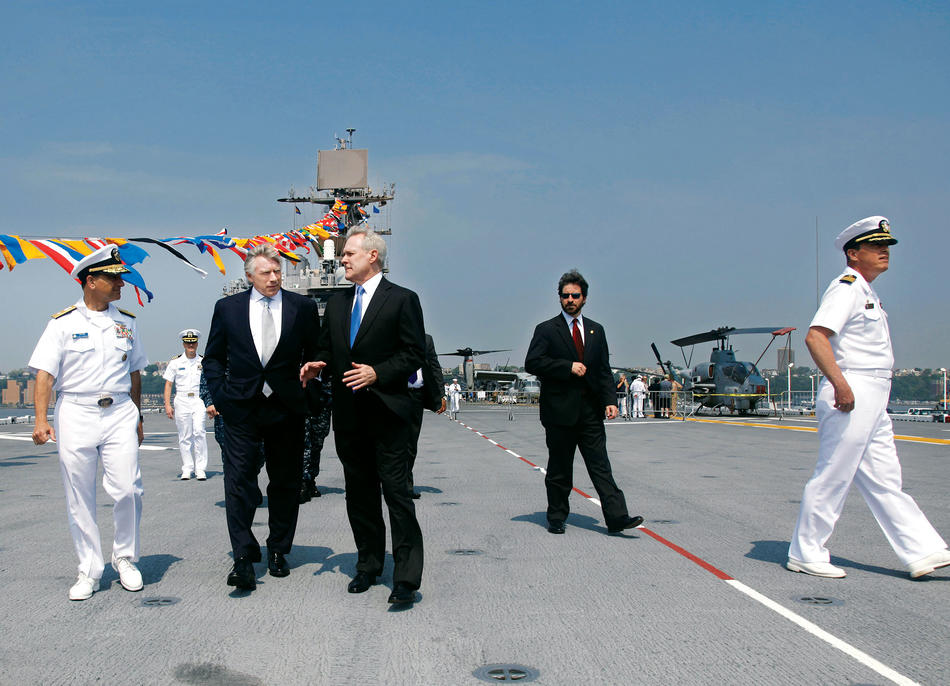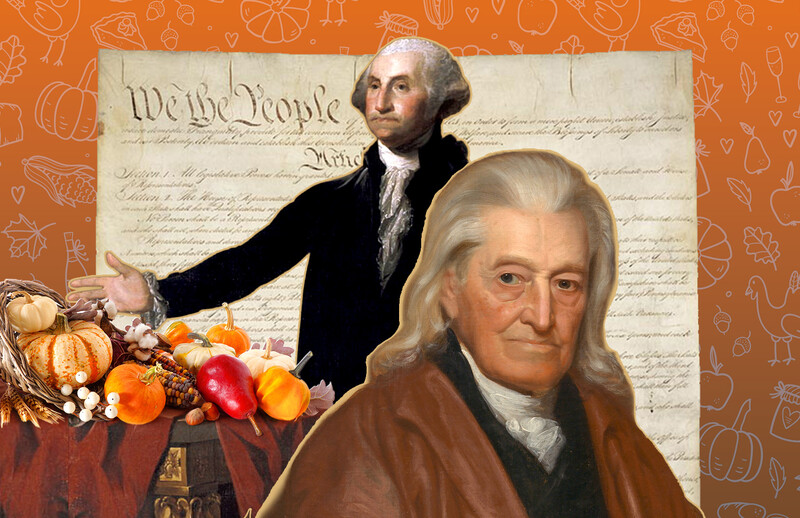On May 26, President Lee C. Bollinger and U.S. Navy Secretary Ray Mabus signed an agreement of their intention to reinstate Naval Reserve Officers Training Corps (NROTC) at Columbia for the first time in more than 40 years.
Under the agreement, Columbia students will participate in Naval ROTC at SUNY Maritime College in Throggs Neck, N.Y., consistent with the military’s practice of maintaining regional consortium units. Naval ROTC, which prepares officers for both the Navy and Marine Corps, will have an office on the Morningside Campus where active-duty military personnel will be able to meet with Columbia midshipmen.
“NROTC’s return to Columbia is good for the University, good for the military, and good for our country,” Secretary Mabus said at a signing ceremony aboard the USS Iwo Jima, which was docked in New York City for public tours as part of the Navy’s annual Fleet Week in late May. “Together, we have made a decision to enrich the experience open to Columbia students, make the military better, and our nation stronger.”
Columbia and many other institutions, including Yale, Harvard, Dartmouth, and Stanford, broke formal ties with ROTC at the height of Vietnam War–era student protests. In recent years, these universities have resisted inviting ROTC back onto their campuses because, they have stated, the military’s Don’t Ask, Don’t Tell policy violates their own nondiscrimination codes. Still, students could always participate in ROTC; Columbia’s Army and Air Force ROTC cadets have long trained with other New York–area students at consortium units hosted at Fordham University and Manhattan College, for instance.
University officials say the new agreement with the Navy, which will give military personnel a physical presence on campus, represents a reengagement between Columbia and the military. The impetus was the federal government’s decision last December to repeal Don’t Ask, Don’t Tell. Following President Obama’s signing of that legislation, there was renewed debate on many college campuses about whether to do more to support ROTC programs. At Columbia, the University Senate held a series of town hall–style meetings and conducted a student survey, which showed that 60 percent of students favored inviting ROTC back onto campus. President Bollinger subsequently sought the input of the University’s Council of Deans, which unanimously agreed.
“Repeal of the Don’t Ask, Don’t Tell law provided a historic opportunity for our nation to live up to its ideals of equality and also for universities to reconsider their relationships with the military,” says Bollinger. “After many months of campus discussion, it is clear that the time has come for Columbia to reengage with the military program of ROTC. I believe that it is the right course of action for Columbia to formalize this recognition and thereby add to the diversity of choices for education and public service we make available to our students.”
Columbia officials say the University will resume “full and formal recognition” of Naval ROTC after the effective date of the repeal of Don’t Ask, Don’t Tell, which is anticipated to come later this year. The Office of the Provost is creating a committee of faculty, students, and administrators “to oversee implementation of the ROTC program consistent with Columbia’s academic standards and policies of nondiscrimination.”



